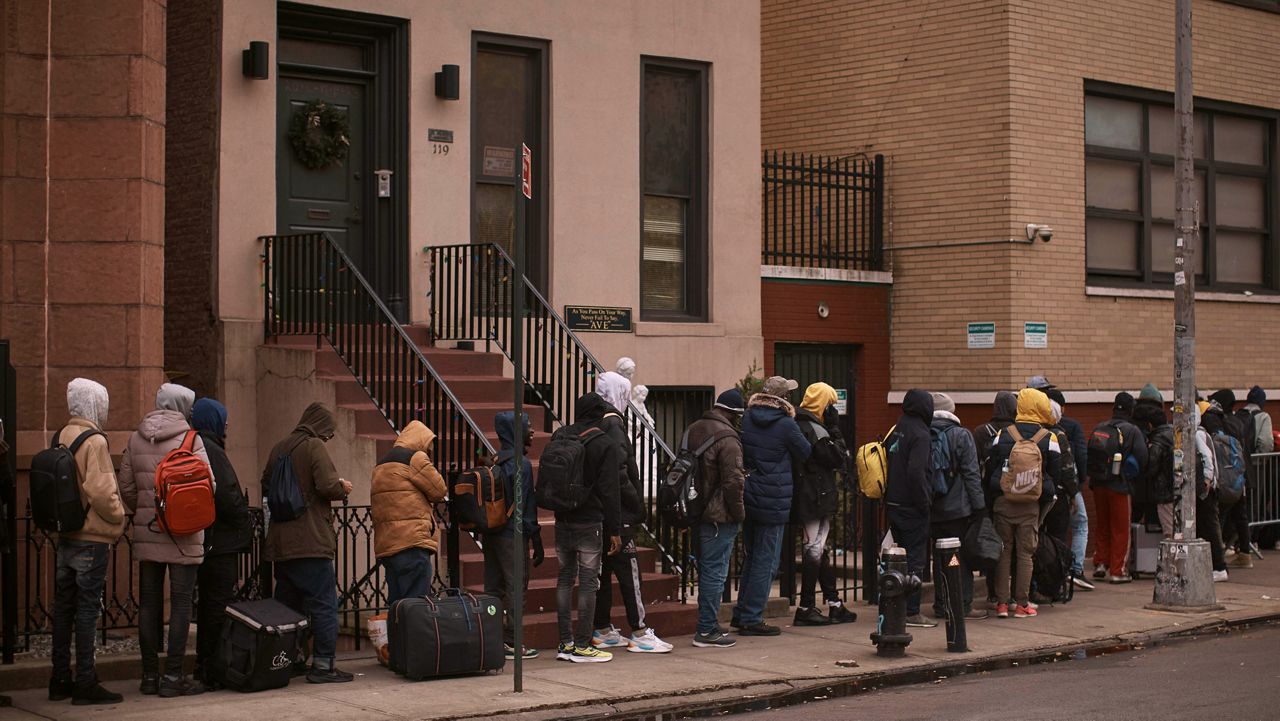In response to the overwhelming influx of migrants, New York City has implemented a new rule limiting adult asylum-seekers without young children to 30 days in city-run shelters.

Stricter Rules for Overwhelmed Shelters
This includes hotels, tent complexes, and other temporary facilities. After this period, migrants must find alternative housing unless they can prove “extenuating circumstances” to receive an extension. As of late Wednesday, 192 migrants had applied for an extension, with 118 approvals. Many more are expected to face eviction notices in the coming months. This policy shift follows Mayor Eric Adams’ administration’s successful March alteration of the city’s “right to shelter” rule, which previously guaranteed temporary housing for every homeless person who requested it.
Migrants’ Struggle for Stability
Mamadou Diallo, a 39-year-old migrant from Senegal, is among those affected. With his shelter stay ending soon, Diallo is uncertain about his future. He has been attending English classes and working temporary jobs while waiting for federal authorization to apply for a permanent job. “I don’t have anywhere to go,” Diallo said, expressing his determination to improve his situation despite the challenges. Migrants must wait nearly five months after applying for asylum before they can apply for work authorization. Before the new rule, adult migrants without children were limited to 30-day stays but could immediately reapply for shelter. Families with young children are limited to 60-day stays but can reapply without needing to justify.
Monitoring and Advocacy
The new policy impacts approximately 15,000 migrant adults out of the 65,000 migrants currently housed in the city’s shelter system. Immigrant rights and homeless advocates are closely monitoring the eviction process to ensure fair treatment. David Giffen, executive director of the Coalition for the Homeless, voiced concerns about potential errors and documentation issues leading to unjust denials of shelter extensions. “We’re watching very carefully to see if that happens because nobody in need of shelter in New York City should ever be relegated to sleeping on the streets,” Giffen said.
Mayor Adams defended the new shelter rules against critics who have labeled them as inhumane and poorly implemented. He emphasized the city’s limited capacity to house migrants indefinitely, citing the nearly 200,000 migrants New York City has provided temporary housing for since spring 2022. “People said it’s inhumane to put people out during the wintertime, so now they say it’s inhumane to do it in the summertime,” Adams said. “There’s no good time.”
Comparisons and Future Plans
New York City’s new shelter policy comes as other cities like Denver, Chicago, and Massachusetts adopt varying approaches to manage their migrant populations. Denver has initiated a support program offering six-month apartment stays and job preparation, while Chicago imposes 60-day shelter limits on adult migrants without renewal options. Massachusetts has capped family shelter stays at nine months starting in June.
In October, Adams sought to suspend the “right to shelter” requirement but faced opposition from immigrant rights and homeless advocacy groups. A March settlement led to the current rules for migrants, allowing city officials to grant extensions on a case-by-case basis for migrants demonstrating efforts to resettle, such as applying for work authorization, seeking employment or housing, or having plans to leave the city within 30 days. Extensions are also available for those with upcoming immigration hearings, serious medical procedures, or full-time high school enrollment for 18 to 20-year-olds.

“While these changes will require some adaptation, we are confident that they will help migrants progress to the next stage of their journeys, reduce the significant strain on our shelter system, and enable us to continue providing essential services to all New Yorkers,” Camille Joseph Varlack, Adams’ chief of staff, said in an emailed statement.
